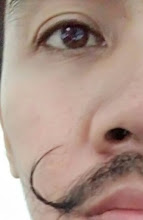The church was known as De Nieuwe Portugeesche Buitenkerk ("The New Portuguese Outer Church"), referring to its position on the outside of the city wall, as opposed to Portugeesche Binnenkerk, "the Portuguese Inner Church"). The church was also known as Belkita during the period.
The church was built outside the old city (Kota Tua) walls for the so-called "black Portuguese" - the Eurasians and natives captured from Portuguese trading posts in India and Malaya and brought to Batavia as slaves. Most of these people were Roman Catholics, but were given their freedom on the condition to join the Dutch Reformed Church, and the converts were known as Mardijker or the liberated ones.
The construction of the church was started in 1693. It was officially opened on Sunday, October 23, 1695 and was jointly financed by the Portuguese and the VOC Government.The first sermon was conducted by Reverend Theodorus Zas and was attended by Governor General Willem van Outhoorn.
Later, the church name changed into "Portuguese Church". During the Japanese occupation of Indonesia in 1942, the name "Portuguese Church" was forbidden and the church was closed for two years.The Japanese army planned to transform the place into a columbarium for the fallen soldiers.
During the power transition, the Dutch government transferred the ownership of the church to the Protestant Churches of Western Indonesia body (Gereja-gereja Protestan di Indonesia) or GPIB. During the 1957 GPIB Sinode Conference, the Portuguese Church changed its name into GPIB Congregation of Zion (GPIB Jemaat Sion), and since then, the church is known as Zion Church.
The church was restored in 1920 and in 1978. The building is protected under the Law of SK DKI Jakarta Governor.
In 1984, the churchyard was reduced for road construction.[2]
The church was built outside the old city (Kota Tua) walls for the so-called "black Portuguese" - the Eurasians and natives captured from Portuguese trading posts in India and Malaya and brought to Batavia as slaves. Most of these people were Roman Catholics, but were given their freedom on the condition to join the Dutch Reformed Church, and the converts were known as Mardijker or the liberated ones.
The construction of the church was started in 1693. It was officially opened on Sunday, October 23, 1695 and was jointly financed by the Portuguese and the VOC Government.The first sermon was conducted by Reverend Theodorus Zas and was attended by Governor General Willem van Outhoorn.
Later, the church name changed into "Portuguese Church". During the Japanese occupation of Indonesia in 1942, the name "Portuguese Church" was forbidden and the church was closed for two years.The Japanese army planned to transform the place into a columbarium for the fallen soldiers.
During the power transition, the Dutch government transferred the ownership of the church to the Protestant Churches of Western Indonesia body (Gereja-gereja Protestan di Indonesia) or GPIB. During the 1957 GPIB Sinode Conference, the Portuguese Church changed its name into GPIB Congregation of Zion (GPIB Jemaat Sion), and since then, the church is known as Zion Church.
The church was restored in 1920 and in 1978. The building is protected under the Law of SK DKI Jakarta Governor.
In 1984, the churchyard was reduced for road construction.[2]

Comments
Post a Comment